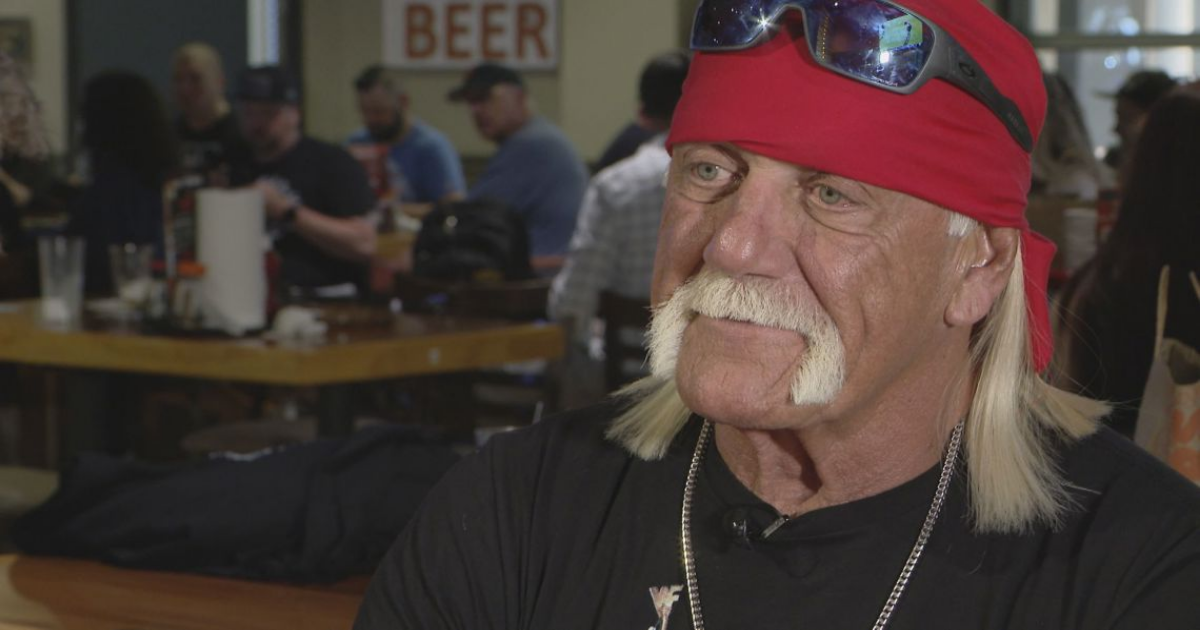GOLDEN VALLEY, Minn. — Wrestling fans across the world are mourning the death of a man who played both hero and villain in his decades-long career, a grappler with long flowing blonde hair, a horseshoe mustache and biceps that were bigger than most people’s legs.
The one and only Hulk Hogan is gone at the age of 71, after spending the last few years of his life in declining health. Multiple reports say Hogan, whose given name was Terry Gene Bollea, died at his home in Clearwater, Florida, of cardiac arrest.
While he ascended to star status during his years in the World Wrestling Federation (WWF), the Hulkster’s wrasslin’ roots can be traced back to the Twin Cities, and the years he spent under the tutelage of the great Verne Gagne in the American Wrestling Association (AWA).
“It hits home… hard,” said Greg Gagne, Verne Gagne’s son, who helped convince Hogan to join them while Hogan was still trying to find his true wrestling identity. “I wrestled in Madison Square Gardena and Hogan was on the card that night… in the main event. He had a horrible match and he came and he said, ‘I can’t make it man. I can’t make it.’ and I said, ‘Why don’t you come back to the AWA and work with my Dad and we’ll work with you. We’ll get you where you need to be.”
It was here that Hogan developed his personality, honed his ring moves and gained an audience that would follow him to wrestling’s biggest stage.
“We showed him quite a few moves, but he didn’t need too many,” Greg Gagne said. “He caught on like that.”
“Well, I love the Twin Cities,” Hogan told KARE 11’s Lou Raguse during a recent trip back to Minnesota to promote his new ‘Real American Beer.’ “I bought a home in Bloomington right where France and 494 are. I had a home back there; I would record at your station.”
Hogan only wrestled in the AWA from 1981 to 1983, starting off as a bad guy – also known as a “heel” – but soon became so popular with fans that Gagne decided to make him a good guy. He battled wrestling legends like Nick Bockwinkel, Verne and Greg Gagne, Jerry Blackwell, and Minnesota home-grown grappler Jesse Ventura.
The Hulk’s interviews with legendary ring announcer “Mean Gene” Okerlund allowed him to ad lib wildly and develop catch phrases that became part of the American vernacular. They’d start with “Well, ya know something, Mean Gene,” and then wind down unpredictable and entertaining avenues.
I remember, we were in Chicago – in a tag team match – and he did that pose and Jim Brunzell got on one side and I was on the other and we tore that shirt off real slow and people just… whew… they went wild.”
After winning and losing championships in the AWA, Hulk moved east, joining the higher profile WWF, and soon won the title in 1984. He left Minnesota behind, but the foundation he built in the Twin Cities would make him a superstar.
“Hulkamania was born in the Twin Cities,” Hogan recalled when talking with Lou Raguse. “I was teaming up with ‘Mad Dog’ Vachon and the ‘Crusher’ one night and ripped my shirt off and the reaction from the audience was bigger than any wrestling move I’ve ever done. I went, ‘Hmmm, now I know what they want. You were onto something.’ And ‘Mean’ Gene and I would do the Hulkamania thing. So, it started right here, brother.”
Hogan would return to Minnesota with the first-ever WWF card to be held here. He did a live shot with KARE 11’s Randy Shaver, dubbing him “Reckless Randy” and generously throwing out his legendary “brother” moniker throughout the interview.
His giant personality led to commercials, movie roles and business opportunities, making him one of the highest-earning characters in wrestling entertainment.
“He was the only wrestler to appear on Sports Illustrated,” said George Schire, Minnesota Wrestling Historian. “You didn’t have to be a fan, everybody knew Hulk Hogan. Whether you liked him or you hated him… he was the guy that put wrestling on a map that it’s never been on before.”
That may be, but Minnesota – and the local wrestling fans – also held a special place in his heart until the end.
“I just love being here,” Hogan remarked during his 2024 visit to MOA. “I had four-and-a-half years of the best years of my life in the Twin Cities.”
“Jumpin Jim” Brunzell, who grew up in White Bear Lake and wrestled as a member of notable tag-teams “The High Flyers” and “The Killer Bees,” knew Hogan well from stints in both the AWA and WWF. Brunzell considered Hulk a good friend and was stunned at the news of his death.
“I was driving down the road and heard Hulk Hogan had passed, and I had to pull over,” Brunzell told KARE’s Lou Raguse during a phone interview Thursday. “He was just one of a kind.”
Brunzell remembers Hogan taking the wrestling world and pop culture by storm, recalling how the Hulkster got a spot on the cover of Sports Illustrated in the mid-80s, and says at the time he was the highest-paid athlete in the world.
“He was the Golden Goose of professional wrestling… he was incredible,” Brunzell said.
But all the fame and financial glory came at a physical cost. Brunzell says Hogan had at least 10 surgeries on his back due to the wear and tear he suffered in the ring, the last one a procedure involving his neck that Brunzell says affected his friend’s heart rhythm.
Brunzell spoke this morning with his former tag team partner and Hogan’s close friend B. Brian Blair, who told him Hulk’s son Nick called this morning just before 9 a.m. and shared the news that Hogan was gone.
“It’s sad we gotta lose our heroes,” Brunzell sighed.
